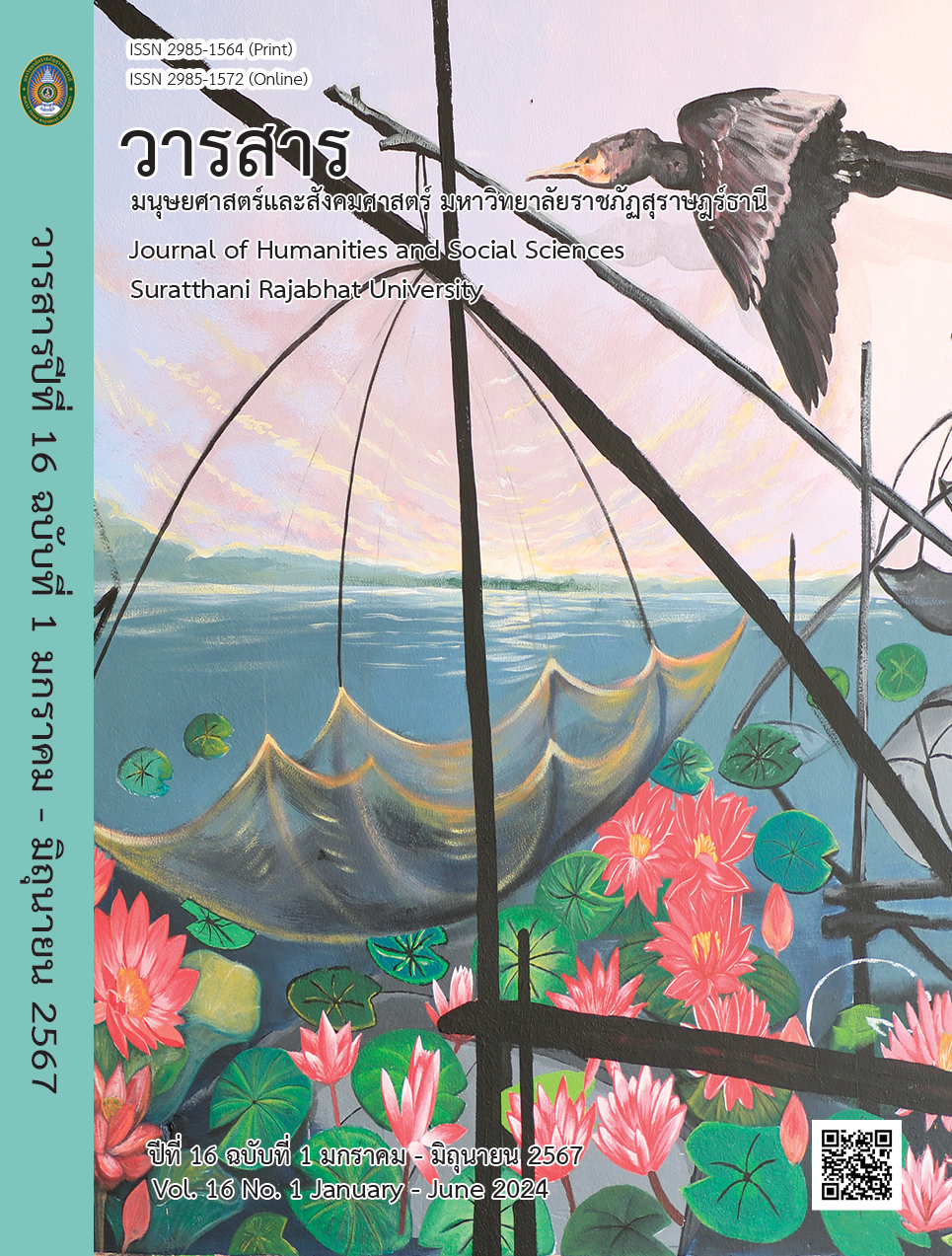Representation of Confucianism’ Li in “Beijing Quadrangle”
Main Article Content
Abstract
This academic article discusses how "Siheyuan" – also known as the Beijing Quadrangle–symbolizes the significance of "li," the Chinese tradition system that aligns with Confucian philosophy. It is an important mechanism for organizing a hierarchical society with varying statuses, genders, and ages so that the residents can live harmoniously and balance under the same roof by planning a house called Siheyuan. The concept of "li" is reflected in the Siheyuan architecture through the plan of houses arranged in a
hierarchical pattern concerning the residents' different statuses, roles, duties, genders, and ages. The arrangement of the internal space of the residences, including size, form, position, and direction, indicates and organizes their residents in positions consistent with the residents' roles and responsibilities defined by Chinese social relations. The highest rank of the establishment is the main house, which serves as an ancestor worshipping place and a
residence of male homeowners; whereas, sons lived in the eastern and western side houses. As for daughters, they lived in the smaller house
located in the most inner area. The servants lived in the inverted house in the outer area, where they had the lowest living conditions. The
arrangement of the buildings within Siheyuan reflects a stratified society in which men had power over women, elders had more power than their
subordinates, and masters had power over their servants. The important status of each person in the family is not only reflected in the layout of the Siheyuan houses but also in other elements such as the roof style, the size and height of the buildings and rooms, and their decorations. Compliance with patterns corresponding to the different residences' statuses brings
harmony in society and family with a class system under the patriarchal concept of feudalism, the foundation that has fostered stability for Chinese society and culture up to the present.
Article Details

This work is licensed under a Creative Commons Attribution-NonCommercial-NoDerivatives 4.0 International License.
All published manuscripts have been verified by peer-peer professors in the fields of humanities and social sciences. Reprinting of the article must be authorized by the editorial staff.
References
กิจชัย จิตขจรวานิช. (2544). ข้อแนะนำในการออกแบบสถาปัตยกรรมเพื่อตอบสนองต่อ
สภาพภูมิอากาศในเขตร้อนชื้น. วารสารหน้าจั่ว สถาปัตยกรรม การออกแบบ
และสภาพแวดล้อม, 17, 169-176.
ต้นข้าว ปาณินท์. (2553). คนและความคิดทาง สถาปัตยกรรม. กรุงเทพฯ: สมมติ.
มาลินี คัมภีรญาณนนท์. (2552). ขงจื่อกับผลงานศิลปะที่หลากหลายมุมมอง. วารสารดำรง
วิชาการ, 8(1), 35-50.
ศรีศักดิ์ พัฒนวศิน. (2545). ทัศนคติต่อที่ว่าง อัตลักษณ์ที่ซ่อนเร้นในสถาปัตยกรรมพื้นถิ่น
เอเชียร่วมสมัย. วารสารวิจัยและสาระสถาปัตยกรรม คณะสถาปัตยกรรมศาสตร์
มหาวิทยาลัยธรรมศาสตร์, 1(1), 129-153.
สยุมพร ฉันทสิทธิพร. (2561). หลักความสัมพันธ์ห้าประการและหลักบรรทัดฐานสามมุม
มองของหลักจริยธรรมกับการรักษาเสถียรภาพของสังคมจีน. วารสาร มจร.
สังคมศาสตร์ปริทรรศน์, 7(2), 247-261.
สุวรรณา สถาอานันท์. (2562). หลุนอี่ว์: ขงจื่อสนทนา. กรุงเทพฯ: โอเพ่น โซไซตี้.
อติชาติ คำพวง, และ อรอนงค์ อินสะอาด. (2562). ปรัชญาของขงจื่อกับการจัดระเบียบทาง
สังคม: การศึกษาวิเคราะห์คัมภีร์หลุนอี่ว์. วารสารภาษา ศาสนา และวัฒนธรรม,
(2), 126-164.
อภิญญา ศิริวรรณ (ผู้ถ่ายภาพ). โรงแรมเป่ยจิงจิ่วอีสือกวงซื่อเหอย่วน. ณ หมายเลข 6
ตรอกหู่ท่งเม่าเอ่อร์ ถนนเจียวเต้าโข่ว ชุมชนโบราณหนานหลัวกู่เซี่ยง ปักกิ่ง
สาธารณรัฐประชาชนจีน. เมื่อวันที่ 6 มกราคม พ.ศ. 2562.
เอกพลณัฐ ณัฐพัทธนันท์. (2553). ระบบเครือญาติในลัทธิขงจื่อกับปัญหาคอรัปชั่น: การ
ตีความผ่านคัมภีร์หลุนอี่ว์. วารสารสังคมศาสตร์, 41(1), 158-196.
Cai Fengnian 蔡丰年.(2008).北京旧城胡同与四合院类型学研究. 北方工
业大学硕士学位论文.
Duan Bingren 段炳仁. (2016). 北京四合院志(上).北京:北京出版社.
Gao Wei 高巍. (2017). 四合院. 北京:学苑出版社.
Gu Jun 顾军 & Wang Licheng. 王立成.(2002).试论北京四合院的建筑特色.
北京联合大学学报,-(01), 57-62.
Jia Jun 贾珺. (2018). 北京四合院. 北京:清华大学出版社.
Lai Kehong 来可泓. (2000).国语直解. 郑语.上海: 复旦大学出版社.
Liu Dunzhen 刘敦桢. (2003).中国古代建筑史. 北京:中国建筑工业出版社.
-57.
Ma Bingjian 马炳坚. (2018). 北京四合院建筑. 天津:天津大学出版社.
Meng Fanren 孟凡人. (2006). 元大都的城建规划与元大都和明北京城的中
轴线问题. 故宫学刊,-(01), 96-121.
Ni Yuehong 尼跃红. (2009). 北京胡同四合院类型学研究. 北京:中国建筑工
业出版社.
Qin Hongling 秦红岭. (2001). 中国传统建筑文化的伦理内涵. 华夏文化,
-(03), 13-15.
Qin Hongling 秦红岭. (2003). 简论儒家伦理对传统建筑文化的影响. 华夏文
化, -(04), 26-28.
Sun Weiwei 孙巍巍.(2019). 传统家居文化刍议——以明清北京四合院为例.
边疆经济与文化, -(10), 108-109.
Shen Yantai 沈延太 & Wang Changqing 王长青. (2008). 京城胡同留真. 北
京:外文出版社.
Tonggalaga 桐嘎拉嘎. (2009). 北京四合院民居生态性研究初探硕士学位论
文,北京林业大学).
Wang Qiming 王其明 & Zhang Zhenguang 张振光. (2013). 北京四合院. 北京:
中国建筑工业出版社.
Wei Jianwu 魏建武. (2021). 孔子的仁礼思想. 北京:首都经济贸易大学出版
社.
Yan Binggang 颜炳罡. (2001). 论孔子的仁礼合一说. 山东大学学报(哲学社会
科学版),(02), 52-59.
Yan Xinyi 阎欣怡 & Wang Yuhang 王宇航. (2018). 传承与创新——北京四合院
空间改造设计研究. 艺术与设计(理论),2 (03), 68-70.
Yang Bojun 杨伯峻.(2009). 论语译注. 北京: 中华书局.
Zhang Jingjing 张晶晶. (2013). 四合院的改造与传承(硕士学位论文,北方
工业大学).
Zhang Jing 张靖.(2020). 什么可以代表北京城?. 星球研究所. https://
mp.weixin.qq.com/s/TW3TJyLXJiOLBBwO0yB1Ng
Zhao Guangchao 赵广超. (2016).紫禁城100. 北京:故宫出版社.
Zhao Guangchao 赵广超. (2018) .不只中国木建筑. 北京:中华书局.
Zhao Zhenxiang 赵祯祥, Ding Mijin 丁密金 & Zhou Yue 周越. (2009). 由
四合院规制看儒家礼制人伦思想. 山西建筑, 35 (07), 17-18.


